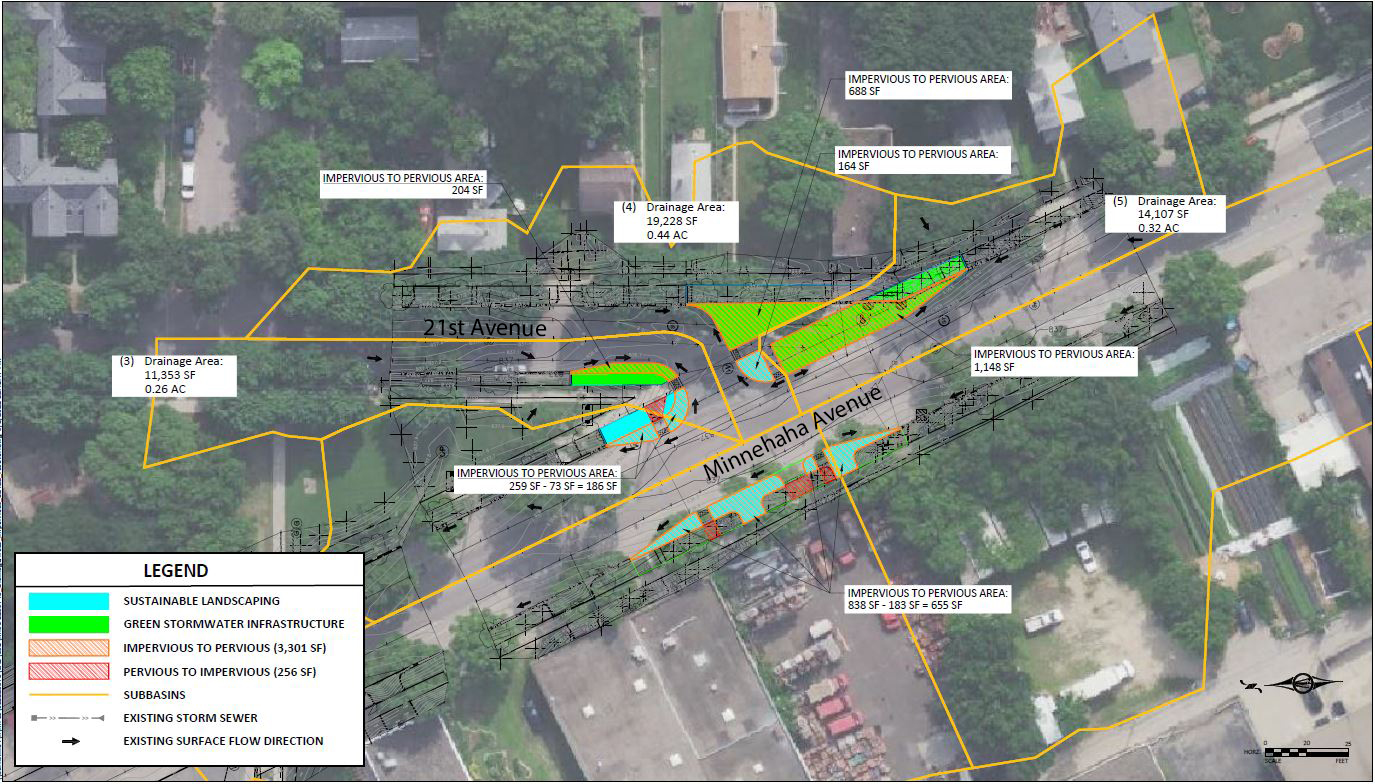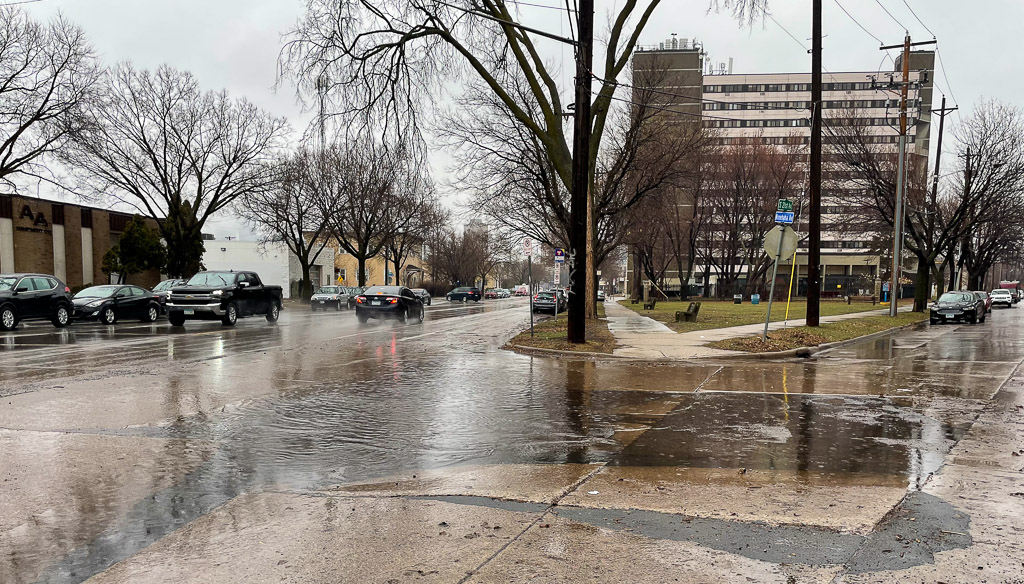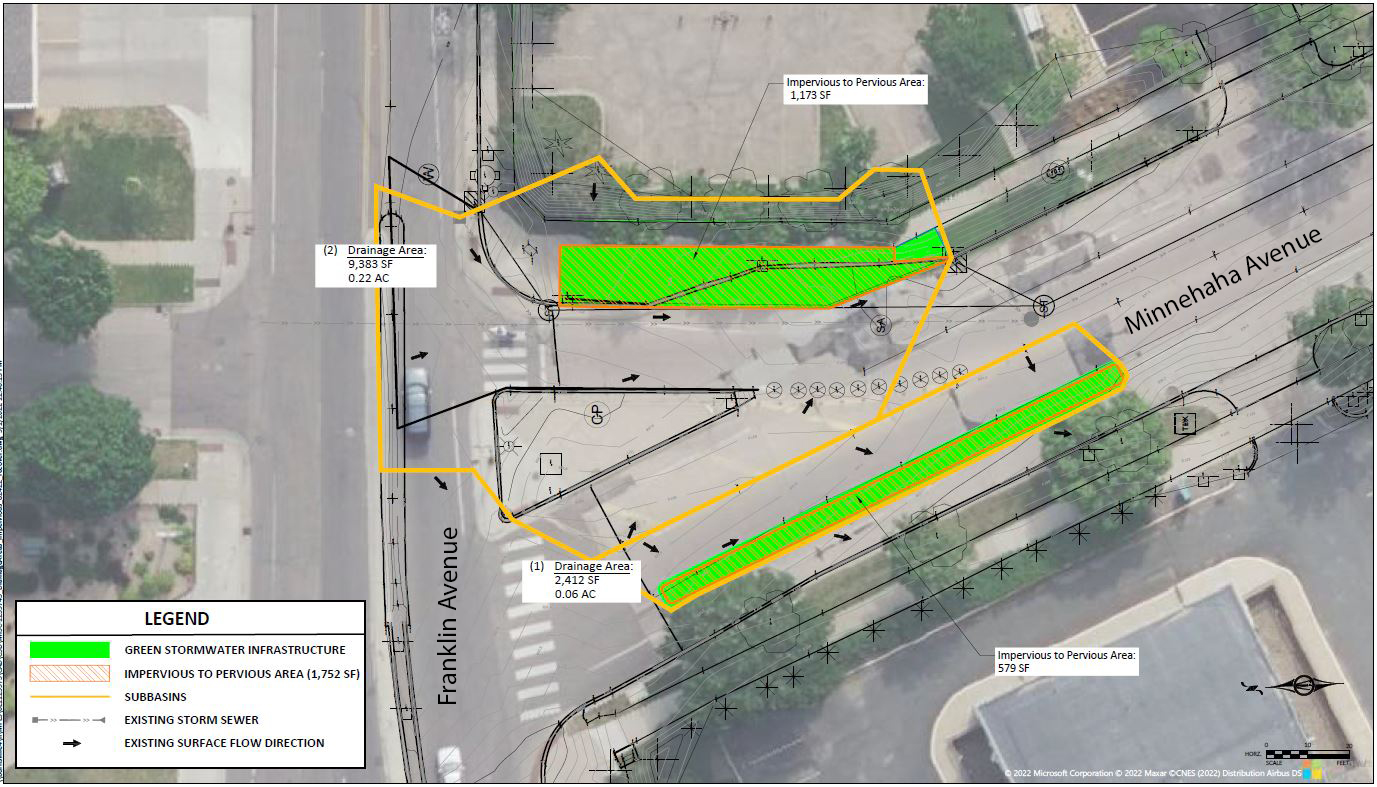Minnehaha Avenue Green Infrastructure
Green stormwater infrastructure at key intersections along Minnehaha Avenue will filter stormwater pollutants, reduce flooding, and provide pollinator habitat.
Project Details
City: Minneapolis
Type: Capital Project Grant
Status: Active
Timeline: 2023–2028
MWMO Funding: $210,000
Partner: City of Minneapolis
Emmy Baskerville
Planner – Project Manager
612-746-4989
Email Emmy Baskerville
View Bio
The MWMO provided $210,000 to the City of Minneapolis to implement green stormwater infrastructure and create pollinator habitat at a pair of intersections: Minnehaha and Franklin Avenues, and Minnehaha and 21st Avenue South. Bioretention basins and sustainable landscaping areas will be constructed to convert 8,500 square feet of impervious area (concrete) into green space with native plantings and stormwater management, capturing runoff from approximately 2.9 acres of public right-of-way and surrounding properties.
The project will provide multiple benefits. In addition to adding green space, bioretention basins will filter stormwater pollutants and help address ponding issues at these intersections. The basins will capture and treat runoff from approximately 1.3 acres, removing an estimated 0.9 pounds of total phosphorus and approximately 170 pounds of sediment annually.
In areas not suitable for green stormwater infrastructure, sustainable landscaping is proposed that will serve as pollinator habitat and more resilient green space. These areas will be seeded with a variety of salt-tolerant forbs and sedges to better survive the application of deicing chemicals applied to the streets in winter.
The project will inform how green infrastructure can be incorporated into the city’s Concrete Streets Rehabilitation Program, which replaces deteriorated pavement. Additionally, this site will inform best practices for green infrastructure establishment and maintenance in the public right-of-way, serving as a learning lab for local youth and nonprofit programs that invest in green jobs.
The site is located in the Minneapolis Southside Green Zone, which is a group of neighborhoods facing the combined impacts of environmental pollution and racial, political, and economic marginalization. Adding green space in this highly impervious area and providing green jobs training supports the Green Zone initiative’s goal of improving air quality, livability, and pollinator habitat, as well as providing career opportunities.



